Let’s talk about Hoi An, the third stop on my travels around Asia. Some places you visit, and they’re great. You have a good time, you eat some good food, you take some pictures, and you go home.
Then… there’s Hoi An.
Hoi An isn’t just a “place.” It’s a feeling. It’s a full-on sensory knockout. It’s the scent of incense in the air, the soft glow of a thousand silk lanterns on ancient yellow walls, the taste of noodles so good you’ll question every meal you’ve ever had before.
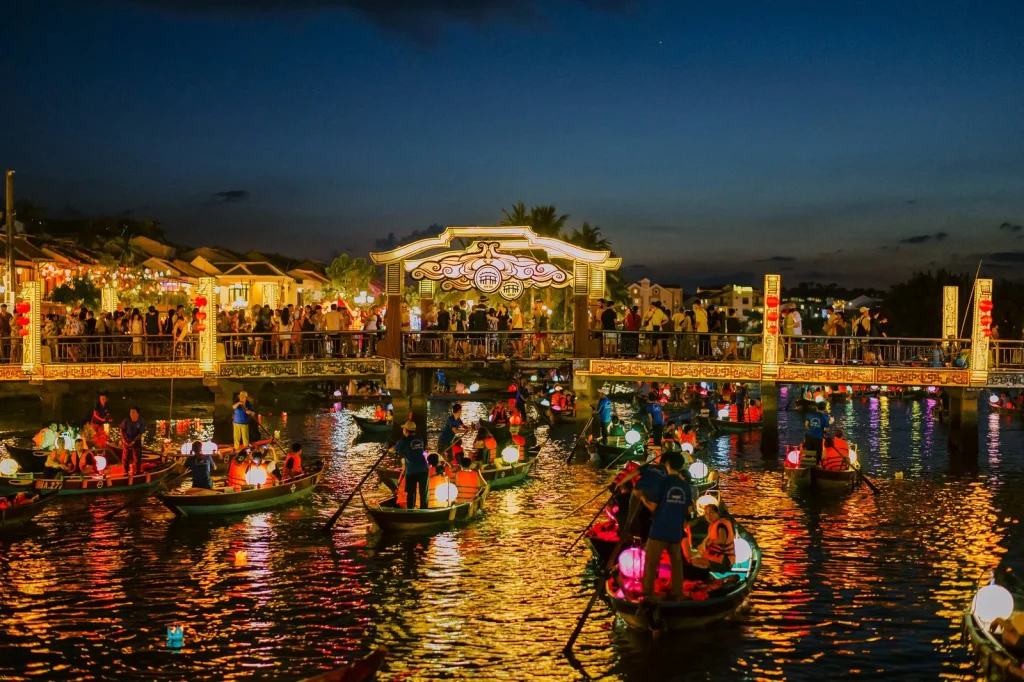 I’m not going to lie, I’ve been to Vietnam a few times, and Hoi An is the place I physically have to be dragged away from. It’s a UNESCO World Heritage site that somehow, against all odds, has kept its soul. It’s a melting pot of Japanese, Chinese, and French colonial architecture, all wrapped up in a chilled-out, riverside vibe.
I’m not going to lie, I’ve been to Vietnam a few times, and Hoi An is the place I physically have to be dragged away from. It’s a UNESCO World Heritage site that somehow, against all odds, has kept its soul. It’s a melting pot of Japanese, Chinese, and French colonial architecture, all wrapped up in a chilled-out, riverside vibe.
You’re here because you’re thinking of going. Let me stop you right there. Stop thinking and start planning. I’m going to give you the full breakdown—the good, the great, and the unmissable—on how to do Hoi An right. Grab a drink of choice as this is going be the ultimate guide.
How to Get To Hoi An
First things first: you can’t just fly directly into Hoi An. It’s part of its charm. It’s a small town, and the nearest airport is in its bigger, buzzier neighbour, Da Nang (DAD). Alternatively you can make the trip from Hue like I did. More about that below.
Da Nang is a fantastic international and domestic airport, so getting there is a breeze from anywhere in Asia (like Bangkok, Singapore, or Kuala Lumpur) or from Hanoi and Ho Chi Minh City.
Once your boots hit the tarmac in Da Nang, you’re about 45-60 minutes away from lantern-filled paradise. Here’s the deal on getting from A to B.
The “I Just Want to Be There” Option (Grab)
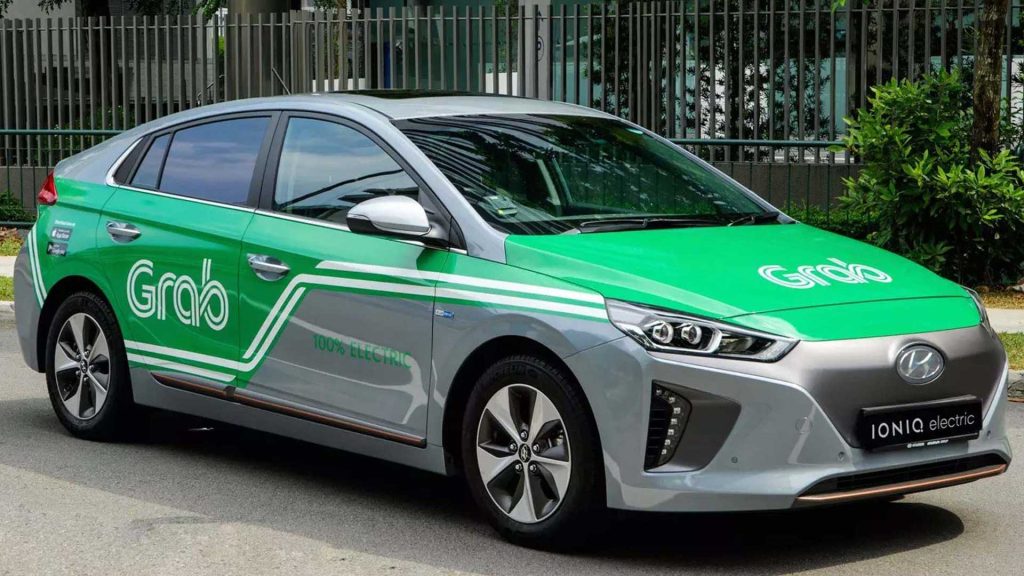 This is the easiest, no-fuss method. Grab (Southeast Asia’s Uber) is king here. It’s cheap, it’s reliable, and you’ll lock in the price before you even get in the car. Expect to pay anywhere from 250,000 to 400,000 VND (about $10-$16 USD) depending on the time of day and your car choice. This is my go-to.
This is the easiest, no-fuss method. Grab (Southeast Asia’s Uber) is king here. It’s cheap, it’s reliable, and you’ll lock in the price before you even get in the car. Expect to pay anywhere from 250,000 to 400,000 VND (about $10-$16 USD) depending on the time of day and your car choice. This is my go-to.
The “I’m Fancy” Option (Private Transfer)
If you’re travelling in a group or just want someone holding a sign with your name on it (we all do sometimes), book a private car through your hotel or Klook. It’s marginally more expensive than a Grab but zero-stress.
The “I’m on a Serious Budget” Option (Public Bus)
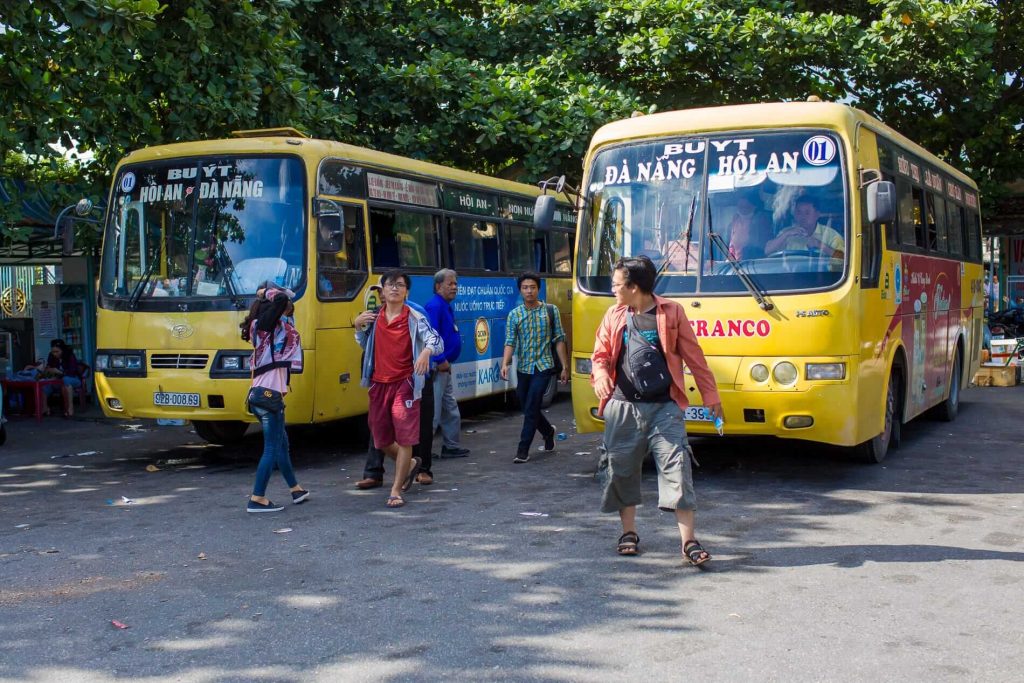 For the true budget backpacker, there’s the bright yellow Bus #1. It’s ridiculously cheap, around 30,000 VND ($1.20). The catch? It’s slow, it’s not air-conditioned, and it drops you at the bus station outside the Ancient Town. So you’ll need a short taxi or Grab ride anyway or barter like mad to not get conned. I also heard reports of travellers being asked to pay extra for every item of luggage. I was also told of people being refused change if they tried to pay with a large bill. It’s an adventure, but maybe not one you want after a long flight.
For the true budget backpacker, there’s the bright yellow Bus #1. It’s ridiculously cheap, around 30,000 VND ($1.20). The catch? It’s slow, it’s not air-conditioned, and it drops you at the bus station outside the Ancient Town. So you’ll need a short taxi or Grab ride anyway or barter like mad to not get conned. I also heard reports of travellers being asked to pay extra for every item of luggage. I was also told of people being refused change if they tried to pay with a large bill. It’s an adventure, but maybe not one you want after a long flight.
The “Easy Rider” Option (Motorbike)
 If you’re coming from Hue, this is your chance to do the legendary Hai Van Pass, which is a non-negotiable, epic experience. I booked with LeFamily Riders in Hue. They are experienced motorbikers and you hop on the back with your driver. Your luggage is loaded separately in a van and is taken to your hotel in Hoi An. You, your guide and the rest of your group then leave to take in the spectacular scenery of the Hai Van Pass. En route there’s a stop for a massive seafood lunch, and a visit to the Marble Mountain. Pack your swimwear in your day bag as you’ll also go swimming in the Mo Waterfall.
If you’re coming from Hue, this is your chance to do the legendary Hai Van Pass, which is a non-negotiable, epic experience. I booked with LeFamily Riders in Hue. They are experienced motorbikers and you hop on the back with your driver. Your luggage is loaded separately in a van and is taken to your hotel in Hoi An. You, your guide and the rest of your group then leave to take in the spectacular scenery of the Hai Van Pass. En route there’s a stop for a massive seafood lunch, and a visit to the Marble Mountain. Pack your swimwear in your day bag as you’ll also go swimming in the Mo Waterfall.
This is a once in a lifetime experience, and I was blown away. If you don’t do it if you’re travelling from Hue you’ll regret it! It was easily the best $59 that I spent on my journey in Vietnam and was a fabulous full day experience.
Where to Sleep: Ancient Town, Rice Paddies, or Beach?
This is the most important decision you’ll make. Where you stay in Hoi An completely shapes your trip. I’ve done them all, so here’s the lowdown.
1. In the Heart of the Action (The Ancient Town)
 This is what you see on Instagram. You stumble out of your hotel, and you are in it—yellow walls, lanterns, and temples everywhere.
This is what you see on Instagram. You stumble out of your hotel, and you are in it—yellow walls, lanterns, and temples everywhere.
-
Pros: Unbelievably beautiful and romantic. You can wake up at 6 AM before the crowds and have the Japanese Bridge all to yourself. You’re a 30-second walk from the best food and bars.
-
Cons: It can be noisy at night, and it’s more expensive. Also, the Ancient Town is pedestrian-only for most of the day, so your taxi will drop you at the edge, and you’ll have to wheel your suitcase over cobblestones.
-
Verdict: Do it once, especially if you’re on a short trip or a romantic getaway. The magic is worth the hassle.
2. The Smart Compromise (Cam Pho or just outside the Old Town)
 This is my personal recommendation for most people. Areas like Cam Pho are a 5-10 minute walk or a 2-minute bicycle ride from the Ancient Town.
This is my personal recommendation for most people. Areas like Cam Pho are a 5-10 minute walk or a 2-minute bicycle ride from the Ancient Town.
-
Pros: Way quieter, so you’ll actually sleep. You get more for your money—beautiful little boutique hotels and amazing homestays (the best way to experience Vietnam) for a fraction of the price.
-
Cons: You have to walk for 5 minutes to get to the centre. Oh, the horror.
-
Verdict: This is the sweet spot. You get the peace and the party. Stay in a homestay. Your hosts will probably feed you, lend you a bicycle, and treat you like family.
3. The Beach Bum (An Bang or Cua Dai Beach)
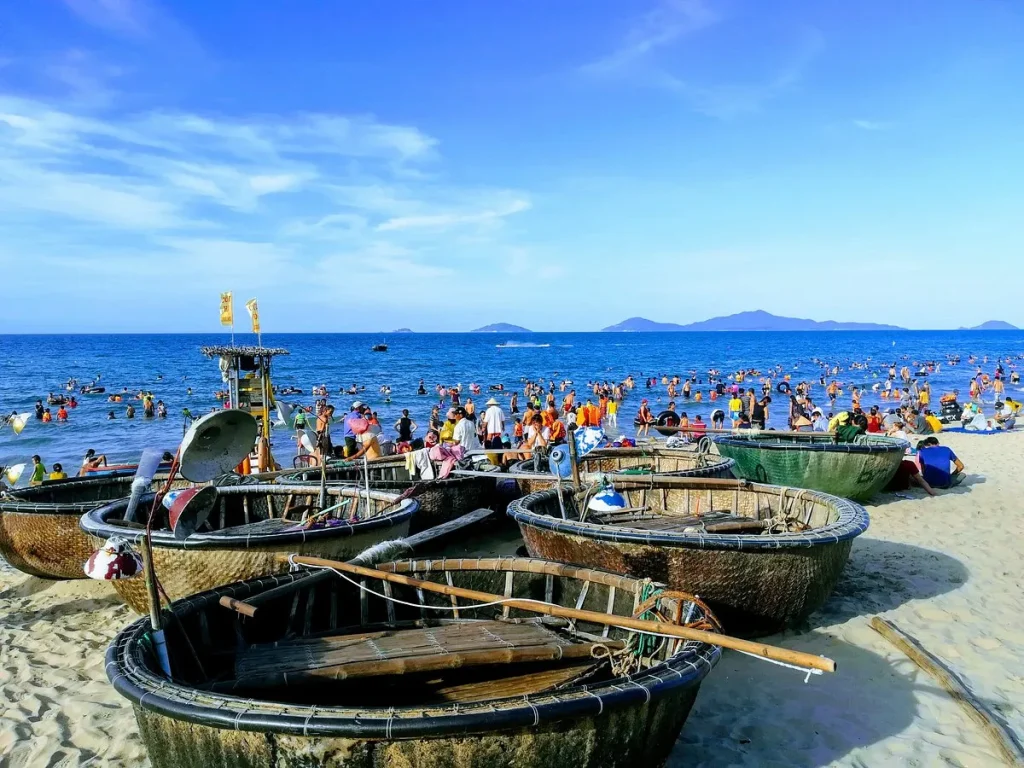 Hoi An has a beach, and it’s a good one. An Bang Beach is the main spot, about 15-20 minutes by taxi from the Ancient Town.
Hoi An has a beach, and it’s a good one. An Bang Beach is the main spot, about 15-20 minutes by taxi from the Ancient Town.
-
Pros: Wake up and jump in the ocean. It’s a full-on beach resort vibe with high-end resorts, chilled-out backpacker bars, and amazing seafood restaurants right on the sand.
-
Cons: You’re not in Hoi An, you’re near Hoi An. You’ll be grabbing a taxi every time you want to see the lanterns, which can get old (and expensive).
-
Verdict: Great if your primary goal is to relax, tan, and drink cocktails, with Hoi An as a nice evening side-trip.
4. The Zen Master (The Rice Paddies – Tra Que / Cam Thanh)
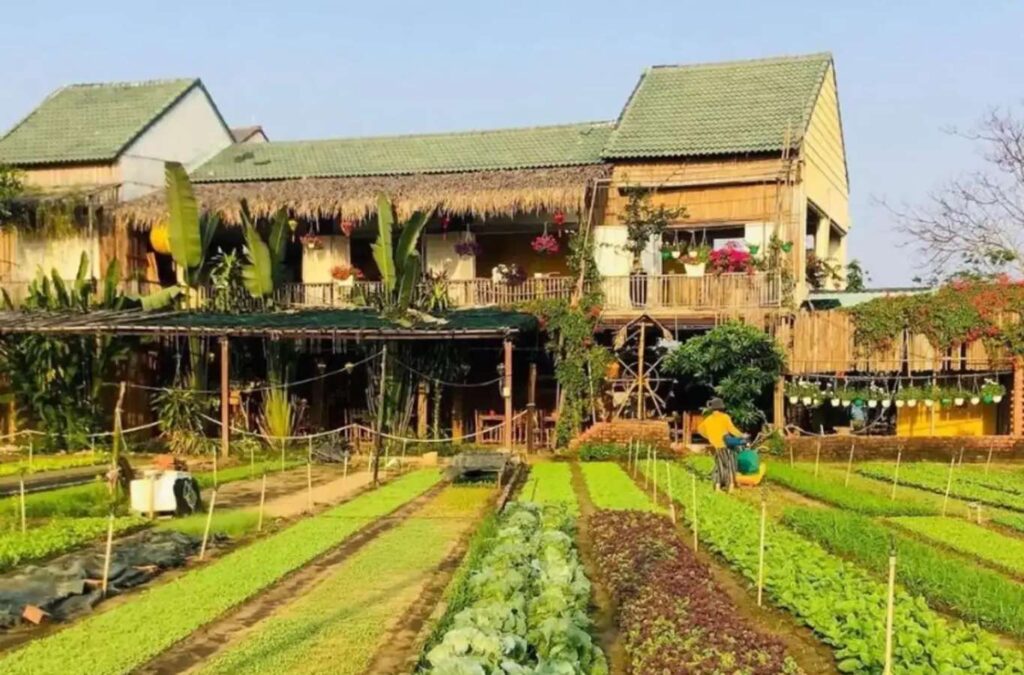 This is the “eat, pray, love” option. Dotted between the town and the beach are endless, gorgeous green rice paddies, home to eco-resorts and quiet villas.
This is the “eat, pray, love” option. Dotted between the town and the beach are endless, gorgeous green rice paddies, home to eco-resorts and quiet villas.
-
Pros: It is stunning. Waking up to the sight of a water buffalo grazing outside your window is something else. It’s peaceful, and you’ll live on a bicycle, cycling through Tra Que Vegetable Village or down to the beach.
-
Cons: You’re isolated. You need a bicycle or scooter to get anywhere. And at night, those country lanes are dark.
-
Verdict: Perfect for a second trip, a long-term stay, or if you just want to unplug from the world and write your novel.
What to See & Do (Besides Just Staring at Lanterns)
Look, you will spend hours just wandering aimlessly, jaw on the floor. That’s “Activity #1.” But when you’re ready for more, here’s the checklist.
1. Explore the Ancient Town (Properly)
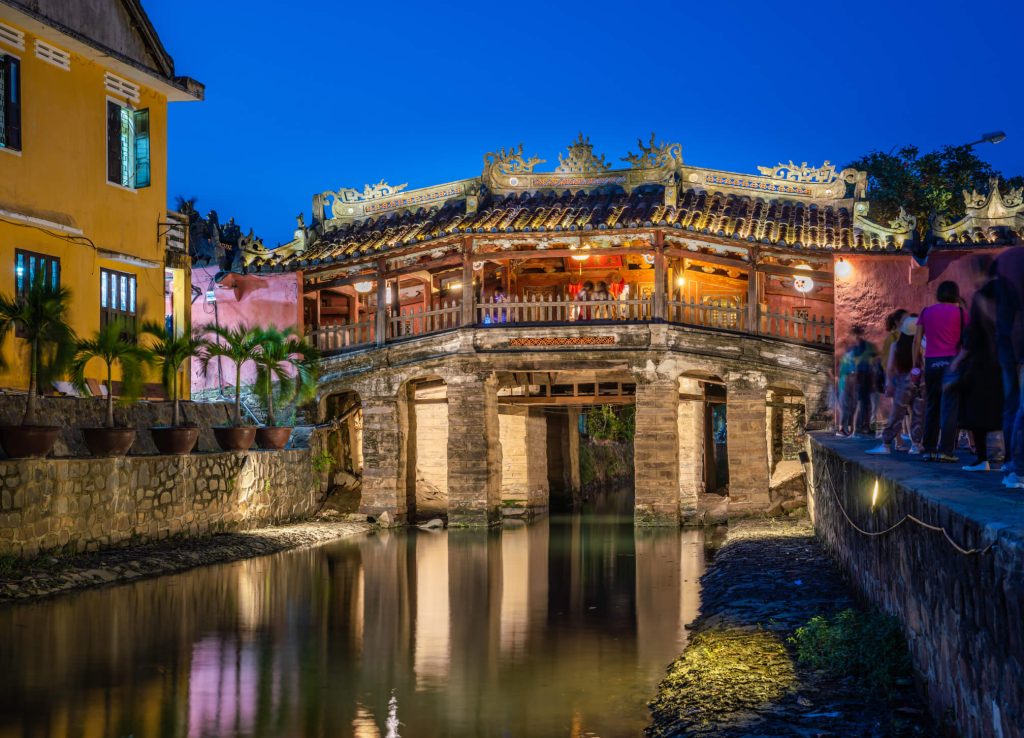 The core of Hoi An is a ticketed area. Don’t fight it. Find one of the little blue ticket booths and buy the Ancient Town Ticket (120,000 VND, about $5). This isn’t an “entry” fee; it’s a booklet of 5 coupons that get you into the main historical sights. You’ll be contributing to the preservation, and you’ll get to see the good stuff.
The core of Hoi An is a ticketed area. Don’t fight it. Find one of the little blue ticket booths and buy the Ancient Town Ticket (120,000 VND, about $5). This isn’t an “entry” fee; it’s a booklet of 5 coupons that get you into the main historical sights. You’ll be contributing to the preservation, and you’ll get to see the good stuff.
-
Japanese Covered Bridge: The icon. It’s the 17th-century bridge you’ve seen in every photo. It’s beautiful.
-
Old Houses: Go to the Tan Ky or Phung Hung houses. These are 200-year-old merchant homes, still lived in by the same families, and they are packed with incredible history (and flood-level markings on the wall!).
-
Assembly Halls: The Fujian Assembly Hall is the big one. It’s a riot of colour, with giant carved dragons, intricate statues, and massive, spiralling incense coils hanging from the ceiling.
My Pro-Tip: Go early. Like, sunrise early. The town is empty, the light is golden, and you’ll see locals doing Tai Chi, shopping at the market, and starting their day. It’s a completely different (and better) city than at 8 PM.
2. Get Something Tailor-Made
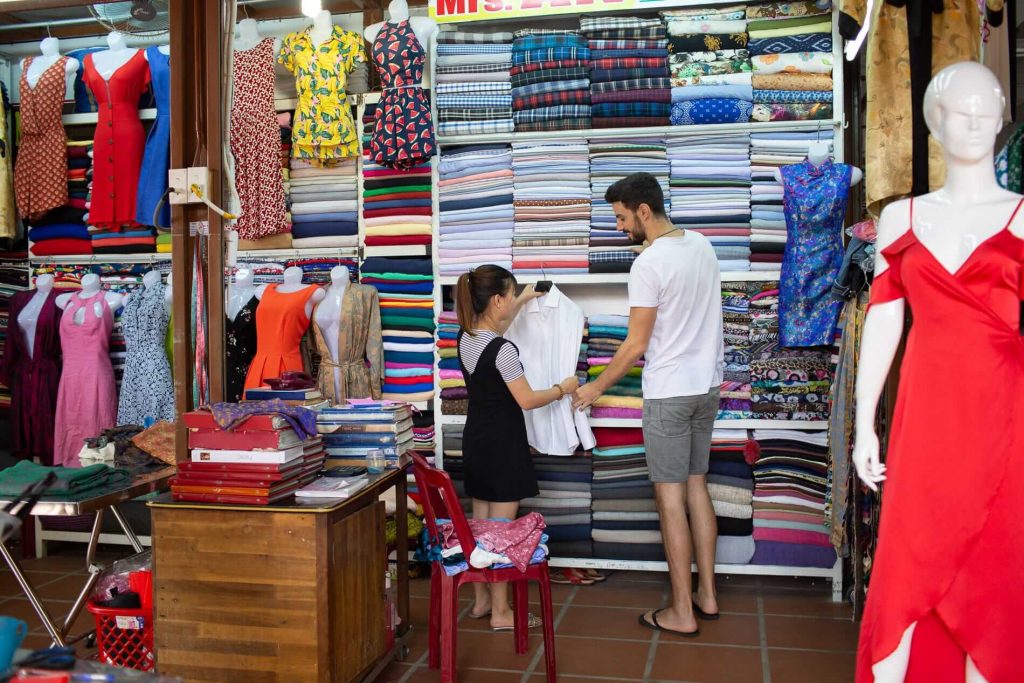 This is the big one. Hoi An is the tailor capital of the world. You can get anything—a full three-piece suit, a ballgown, leather boots, a copy of your favourite jacket—made for you in 48 hours for an insane price. It’s an experience.
This is the big one. Hoi An is the tailor capital of the world. You can get anything—a full three-piece suit, a ballgown, leather boots, a copy of your favourite jacket—made for you in 48 hours for an insane price. It’s an experience.
Here’s the 101 on not getting ripped off:
-
Allow Time: Do not do this on your last day. You need a minimum of 3 days. Day 1 is for your consultation and first measurements. Day 2 is for your first fitting (it will be wrong, this is normal). Day 3 is for your final fitting and pickup.
-
Do Your Research: There are 400+ tailors. The big, famous ones (like Yaly Couture or Bebe Tailor) are high-quality but also the most expensive. Smaller, family-run shops can be just as good for a fraction of the price, but you’ll need to check recent reviews.
-
Bring Photos: Don’t just say “I want a blue suit.” Have a Pinterest board. Have 10 screenshots. Show them exactly what you want, down to the buttons.
-
Be Picky: At your fitting, be that person. If it’s not perfect, say so. “The shoulder is pulling,” “It’s a little tight here.” They want you to be happy, and they will fix it. I had a suit jacket re-cut three times, and they were still smiling.
3. Row A Basket Boat (And Brace For “Gangnam Style”)
 Okay, this is pure, unadulterated touristy fun, and even I am 100% up for it. You head out to the Cam Thanh coconut groves (a 10-min drive) and pile into a giant, round “basket boat.”
Okay, this is pure, unadulterated touristy fun, and even I am 100% up for it. You head out to the Cam Thanh coconut groves (a 10-min drive) and pile into a giant, round “basket boat.”
A local will paddle you through the stunning, palm-fringed waterways. It’s beautiful and serene… for about five minutes. Then you’ll hit the main “party” area, where other boat drivers will start spinning their boats at high speed while blasting “Gangnam Style” or “Baby Shark.” It is hilarious, absurd, and an absolute must. You’ll also learn to fish for crabs and see locals make origami-style art out of palm leaves. Just do it.
4. See The “Angkor Wat Of Vietnam”: My Son Sanctuary
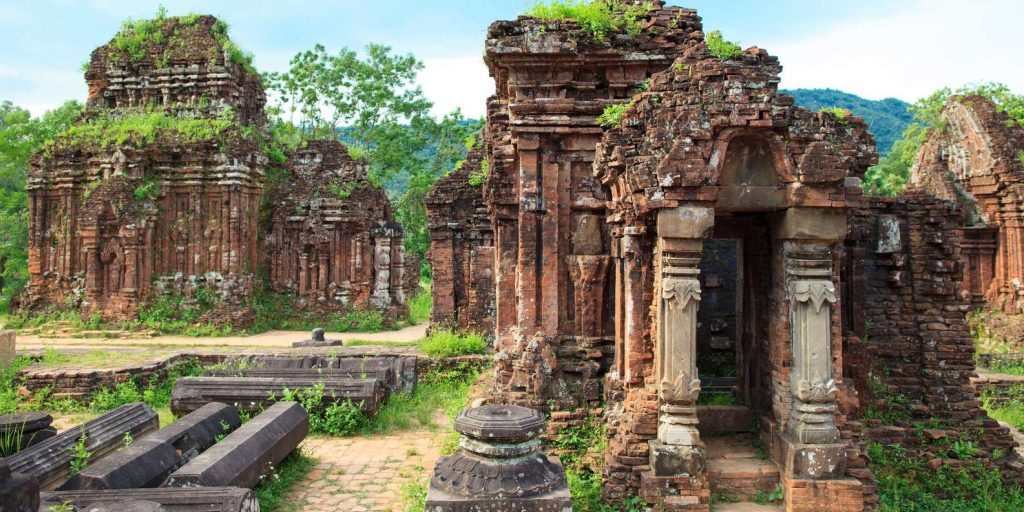 About an hour outside Hoi An is My Son Sanctuary, a UNESCO-listed cluster of ruined Hindu temples from the Champa Kingdom. These date from the 4th to the 13th centuries. It’s like a mini, jungle-covered Angkor Wat.
About an hour outside Hoi An is My Son Sanctuary, a UNESCO-listed cluster of ruined Hindu temples from the Champa Kingdom. These date from the 4th to the 13th centuries. It’s like a mini, jungle-covered Angkor Wat.
It was heavily bombed during the war, so many temples are just piles of red brick, but what’s left is haunting and beautiful. Go on a tour. A good guide is essential to explain what you’re actually looking at. Most tours will bus you there in the morning and (the best part) bring you back to Hoi An via a slow, relaxing boat trip on the Thu Bon River.
5. Take A Cooking Class
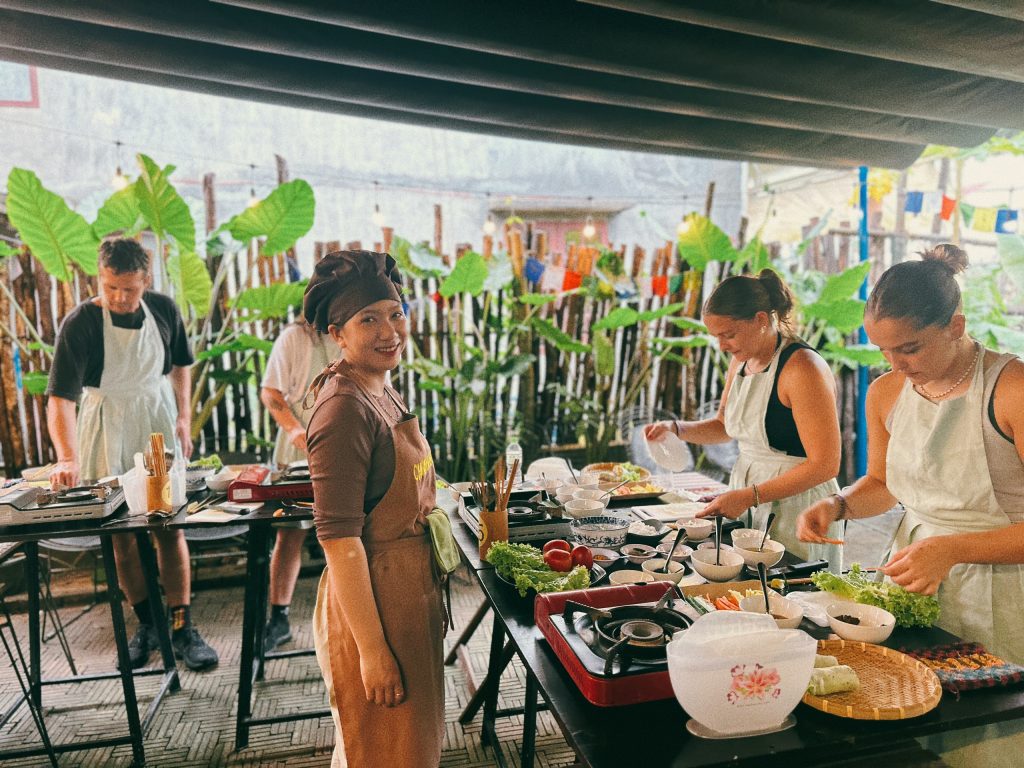 You’re going to fall in love with the food (more on that next). The best souvenir you can take home is the ability to cook it.
You’re going to fall in love with the food (more on that next). The best souvenir you can take home is the ability to cook it.
Dozens of classes are available, but the best ones include a full “farm-to-table” experience. You’ll typically start with a tour of the bustling Central Market, then a boat ride to Tra Que Vegetable Village. You’ll get to walk through the organic herb gardens (where all the best restaurants get their greens), and then learn to cook a 4-course Vietnamese meal. It’s a fantastic half-day.
The Food. Oh God, The Food.
This section is the most important. Eating in Hoi An isn’t just fuel. It’s an event. The food here is unique. It’s not a “Top 5,” it’s a “You Must Eat These Or You Have Failed” list.
1. Cao Lầu
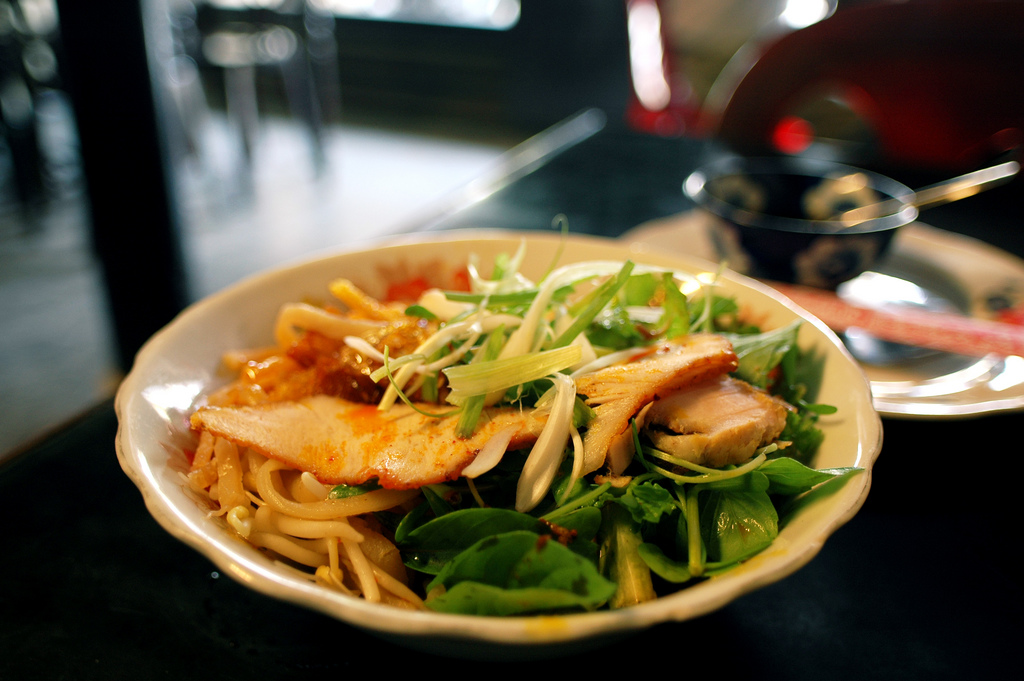 This is Hoi An’s signature dish. You cannot get it anywhere else in the world, and believe me, people have tried. Cao Lầu is a bowl of thick, chewy, smoky rice noodles (like Japanese udon), slices of char-siu-style pork, and a handful of fresh greens, all in a tiny amount of rich, savoury broth.
This is Hoi An’s signature dish. You cannot get it anywhere else in the world, and believe me, people have tried. Cao Lầu is a bowl of thick, chewy, smoky rice noodles (like Japanese udon), slices of char-siu-style pork, and a handful of fresh greens, all in a tiny amount of rich, savoury broth.
The legend? The noodles are made using water from one specific ancient well in town (the Ba Le Well) and lye ash from a specific tree, which is what gives them their unique texture and colour.
-
Where to get it: Find a local, no-frills spot. My favourite is Cao Lầu Thanh (26 Thai Phien).
2. Bánh Mì (The Bánh Mì)
 You think you’ve had a Bánh Mì? You haven’t. Not until you’ve been to Hoi An. Anthony Bourdain himself called the Bánh Mì from Bánh Mì Phượng (2b Phan Chu Trinh) “a symphony in a sandwich,” and he wasn’t wrong. It’s a crunchy, fresh baguette stuffed with multiple kinds of pork, pâté, a fried egg, fresh herbs, pickled veggies, and a secret chilli sauce. It’s a masterpiece.
You think you’ve had a Bánh Mì? You haven’t. Not until you’ve been to Hoi An. Anthony Bourdain himself called the Bánh Mì from Bánh Mì Phượng (2b Phan Chu Trinh) “a symphony in a sandwich,” and he wasn’t wrong. It’s a crunchy, fresh baguette stuffed with multiple kinds of pork, pâté, a fried egg, fresh herbs, pickled veggies, and a secret chilli sauce. It’s a masterpiece.
The Great Bánh Mì Debate: Locals are divided. Half the town swears by Bánh Mì Phượng (Bourdain’s pick), and the other half will fight you to the death for Madam Khanh – The Bánh Mì Queen (115 Trần Cao Vân).
-
My Verdict: Do what I did. Eat both. In one day. Phượng is a flavour explosion; Madam Khanh’s is a little “cleaner,” with a legendary egg sauce. You can’t go wrong.
3. White Rose Dumplings (Bánh Bao Vạc)
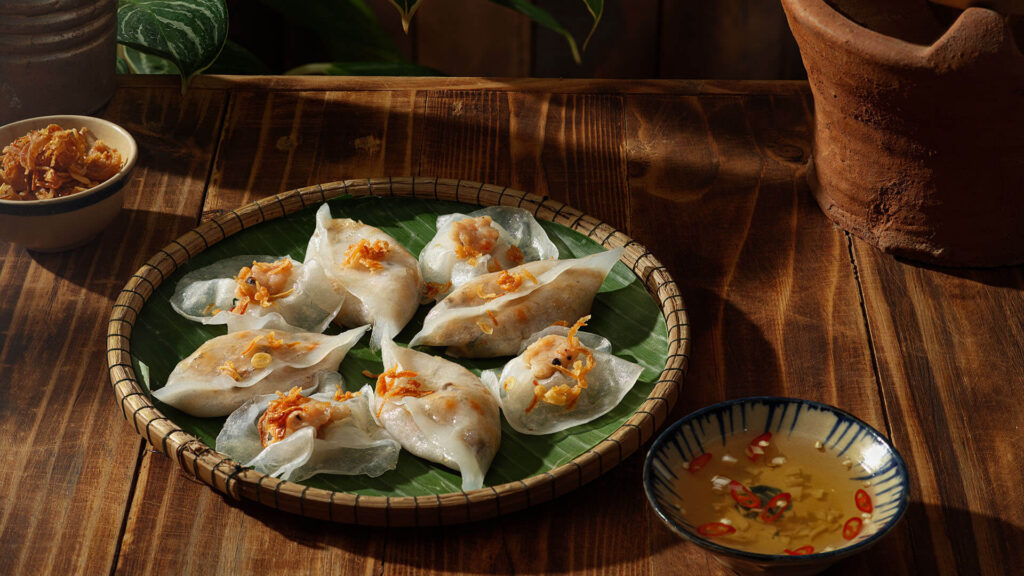 These are beautiful, delicate, and delicious. They’re translucent, chewy dumplings (shrimp filling, wrapped in rice paper) bunched up to look like a—you guessed it—white rose. They’re steamed and served with a tangy dipping sauce and a sprinkle of crispy fried shallots.
These are beautiful, delicate, and delicious. They’re translucent, chewy dumplings (shrimp filling, wrapped in rice paper) bunched up to look like a—you guessed it—white rose. They’re steamed and served with a tangy dipping sauce and a sprinkle of crispy fried shallots.
-
Where to get it: Most restaurants have them, but White Rose Restaurant (533 Hai Bà Trưng) is the original. They supposedly supply all the other restaurants in town from this one kitchen.
4. Cơm Gà (Hoi An Chicken Rice)
 This isn’t your bland, basic chicken rice. The rice itself is the star, cooked in chicken broth and turmeric, giving it a beautiful yellow colour and a fragrant, savoury flavour. It’s topped, or accompanied with shredded, free-range chicken, onions, and fresh herbs. A textural, flavourful delight.
This isn’t your bland, basic chicken rice. The rice itself is the star, cooked in chicken broth and turmeric, giving it a beautiful yellow colour and a fragrant, savoury flavour. It’s topped, or accompanied with shredded, free-range chicken, onions, and fresh herbs. A textural, flavourful delight.
-
Where to get it: Cơm Gà Bà Buội (22 Phan Chu Trinh) is the local institution.
And Finally, the “Booze”
This is travelfoodandbooze.com after all. Hoi An isn’t a crazy party town like Hanoi or Ho Chi Minh, but there are drinks to satisfy every thirst.
Bia Hơi (Fresh Beer)
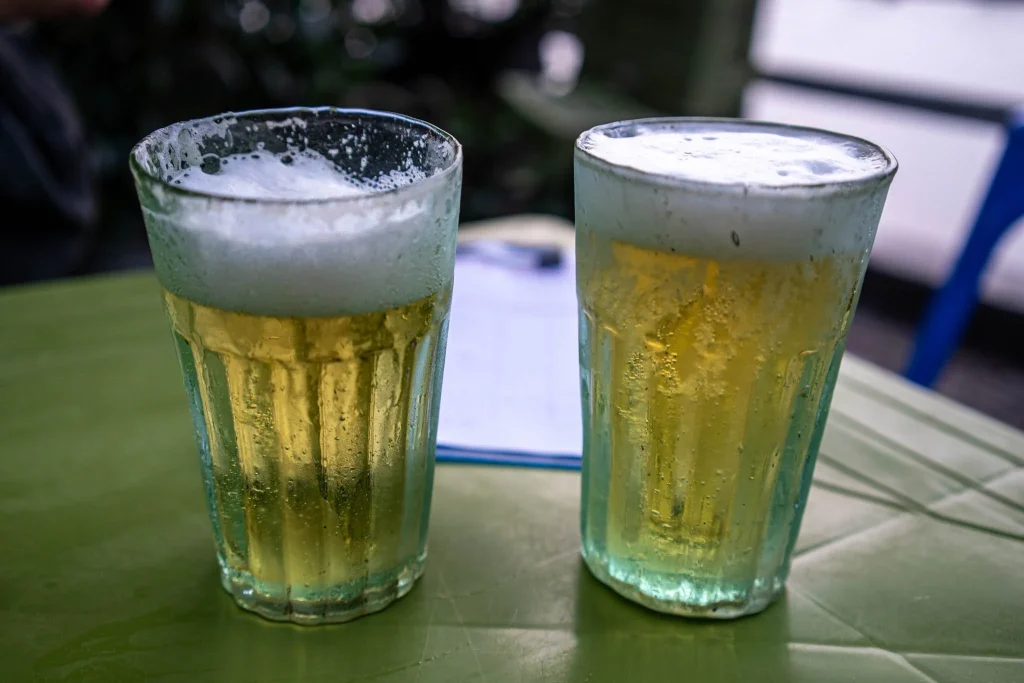 The holy grail. This is “fresh” beer, brewed daily and delivered in kegs. It’s light, it’s refreshing, and it costs about 5,000-10,000 VND (around 30 cents) a glass. Yes, 30 cents. Find any local, hole-in-the-wall spot with a “Bia Hơi” sign and settle in.
The holy grail. This is “fresh” beer, brewed daily and delivered in kegs. It’s light, it’s refreshing, and it costs about 5,000-10,000 VND (around 30 cents) a glass. Yes, 30 cents. Find any local, hole-in-the-wall spot with a “Bia Hơi” sign and settle in.
Riverside Cocktails
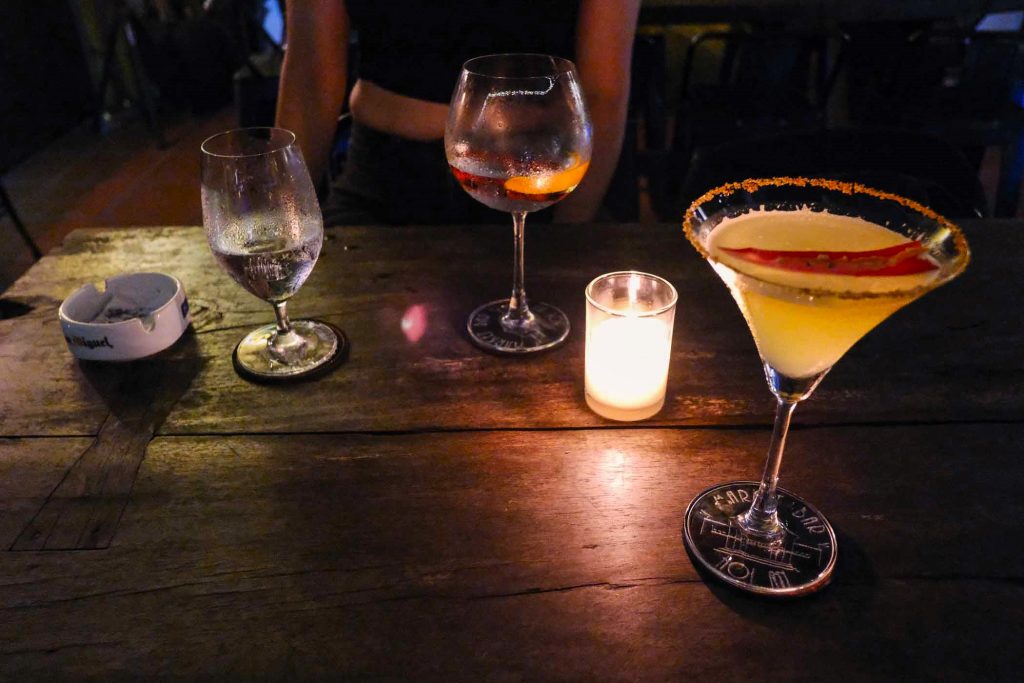 The bars along the river in the Ancient Town are the most scenic. They’re also the most expensive. But, let’s be honest, paying $5 for a cocktail with that view of the lanterns and the boats floating by is an absolute bargain.
The bars along the river in the Ancient Town are the most scenic. They’re also the most expensive. But, let’s be honest, paying $5 for a cocktail with that view of the lanterns and the boats floating by is an absolute bargain.
The Back Alley Bars
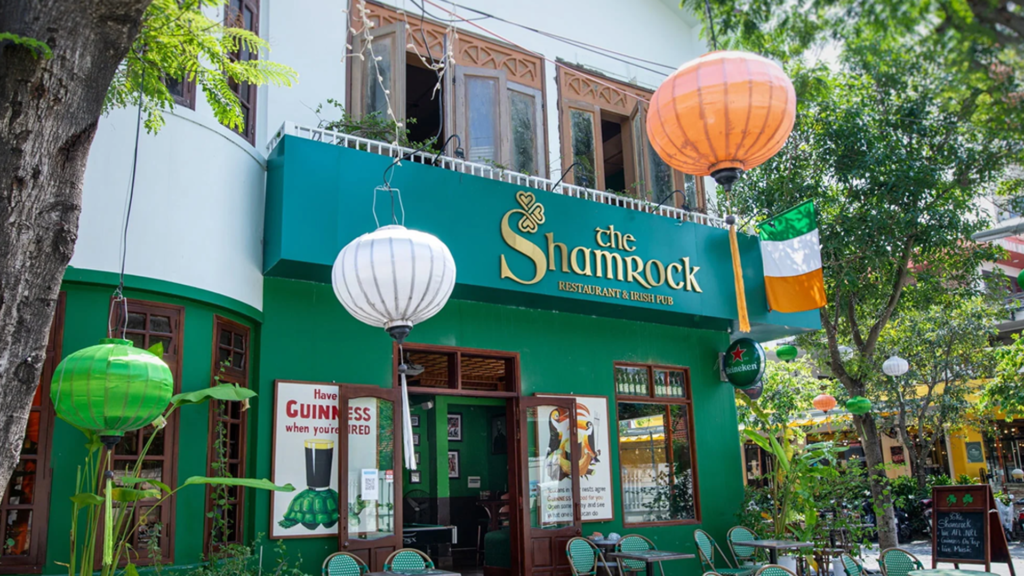 Dive into the smaller alleyways to find the real gems. Places like the Dive Bar or Shamrock Irish Pub (why does every town have an Irish pub?!) are great for meeting other travellers and ex-pats and having a proper night.
Dive into the smaller alleyways to find the real gems. Places like the Dive Bar or Shamrock Irish Pub (why does every town have an Irish pub?!) are great for meeting other travellers and ex-pats and having a proper night.
The Final Word
Hoi An is one of those rare places that is 100% as good as the pictures. It’s a town that forces you to slow down, to walk, to look, and to taste.
My last piece of advice? Put the phone away. I mean, after you’ve taken 500 photos of the lanterns.
Just grab a Bánh Mì, find a low stool by the river, and just… watch. Watch the boats float by. Watch the light change on the yellow walls. Watch the families and couples stroll by, all with that same stupid, happy grin on their face. The one you’ll have, too.
Just go, you’ll love it!

